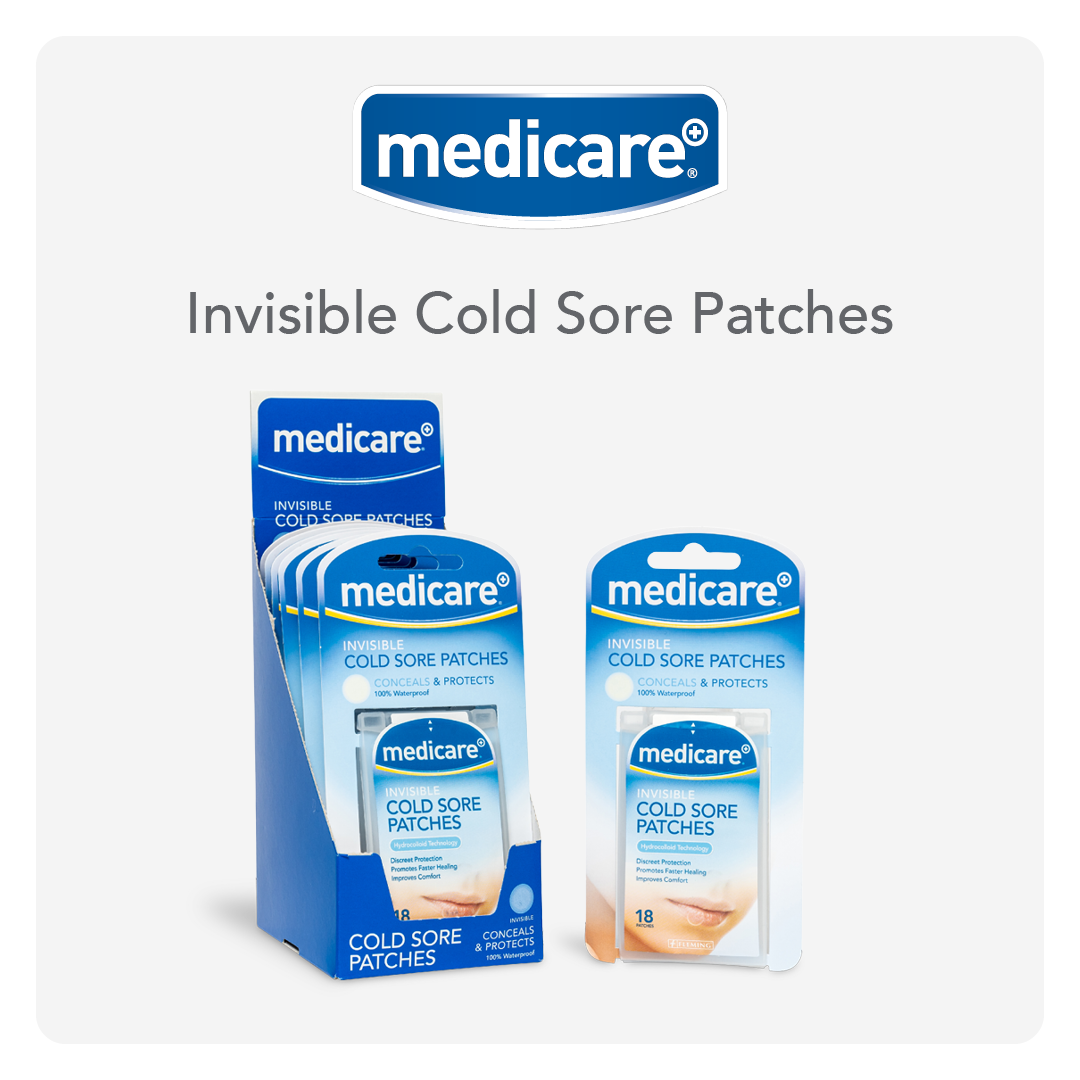Headlines
- Advanced Footcare Solutions: Use Cases Explained
- Keeping Customers Covered: How Pharmacies can address the Summer Burn Surge - A clinical and practical guide for pharmacy teams
- Fleming Medical Achieves ISO 13485 Certification – Reinforcing Our Commitment to Patient Safety and Quality
- Breathe Easy with Medicare Nasal Spray
- Gentle Daily Ear Care with Medicare Ear Spray
Causes, Symptoms & Treatment of Cold Sores

Tingling and itchy lips? Painful oozing blisters? Cold sores, also known as fever blisters, can be a nuisance, and once struck, symptoms such as fever, headaches, and muscle aches can follow.
It is said that 4 in 5 people in Ireland and 7 in 10 people in the UK have been previously exposed to the highly contagious, cold sore-causing virus: herpes simplex virus type 1 (HSV-1) in their lifetime. Once exposed, it remains dormant between your cold sore outbreaks and can strike again at any time. When this happens, it is handy to know some causes, stages, and treatment methods you can follow to be prepared for this cold sore season.
What causes cold sores?
Cold sores arise when in close contact with someone who was previously infected with HSV-1. This is often done through direct skin-to-skin contact with an infected person or through using shared utensils, towels, and other personal items. They are not usually serious but can be painful and annoying if not treated properly. A quick diagnosis will help to shorten the healing time. The following factors can trigger a cold sore to appear and these can differ from person to person.
A weakened immune system
Sun exposure
Elevated stress levels
Cold temperatures
Dental procedures that can stretch/tear the lip
Having a cold/other illness
Hormonal changes
Signs and symptoms:
A cold sore will generally pass through 5 main stages.
Tingling and itchy lips: Before a blister even appears, the lips tend to feel itchy, and people often experience a burning sensation. Even at this stage, a cold sore is still said to be transmittable, so it is best to take precautions even when there is no visible blister present.
Blisters form: Up to 24 hours later, a red blister will form, and it may make the lip swell, causing pain and discomfort.
The ‘Weeping Phase’: Over the next couple of days, the blister will burst and ooze with a clear or yellow fluid. This is when the sore is most contagious.
The Scabbing Stage: The blister begins to crust over and heal itself.
The Healing Stage: The fifth and final stage is the healing stage. The sore will eventually heal and flake away, leaving no scar. The entire healing process can take anywhere between 7-10 days.
Treatment - Medicare Hydrocolloid Cold Sore Patches:

One effective treatment method for cold sores is Medicare Cold Sore Patches with Hydrocolloid Technology: They are latex-free and offer comfortable and discreet protection. They contain hydrocolloid technology which promotes quick healing and minimal scabbing while blocking out unwanted germs and dirt. By applying a patch directly on your cold sore, you are not only getting quick relief but are also helping to control the spread of the virus to others around you. To speed up the healing process, it is also recommended to drink lots of water, wash your hands regularly and take all necessary precautions to prevent the spread of the virus. Take pain relief when needed if experiencing further symptoms such as headaches, fever, or muscle pain.
If you are experiencing frequent recurrent cold sores or if the healing time exceeds two weeks, it is best to consult with your pharmacist or GP.
